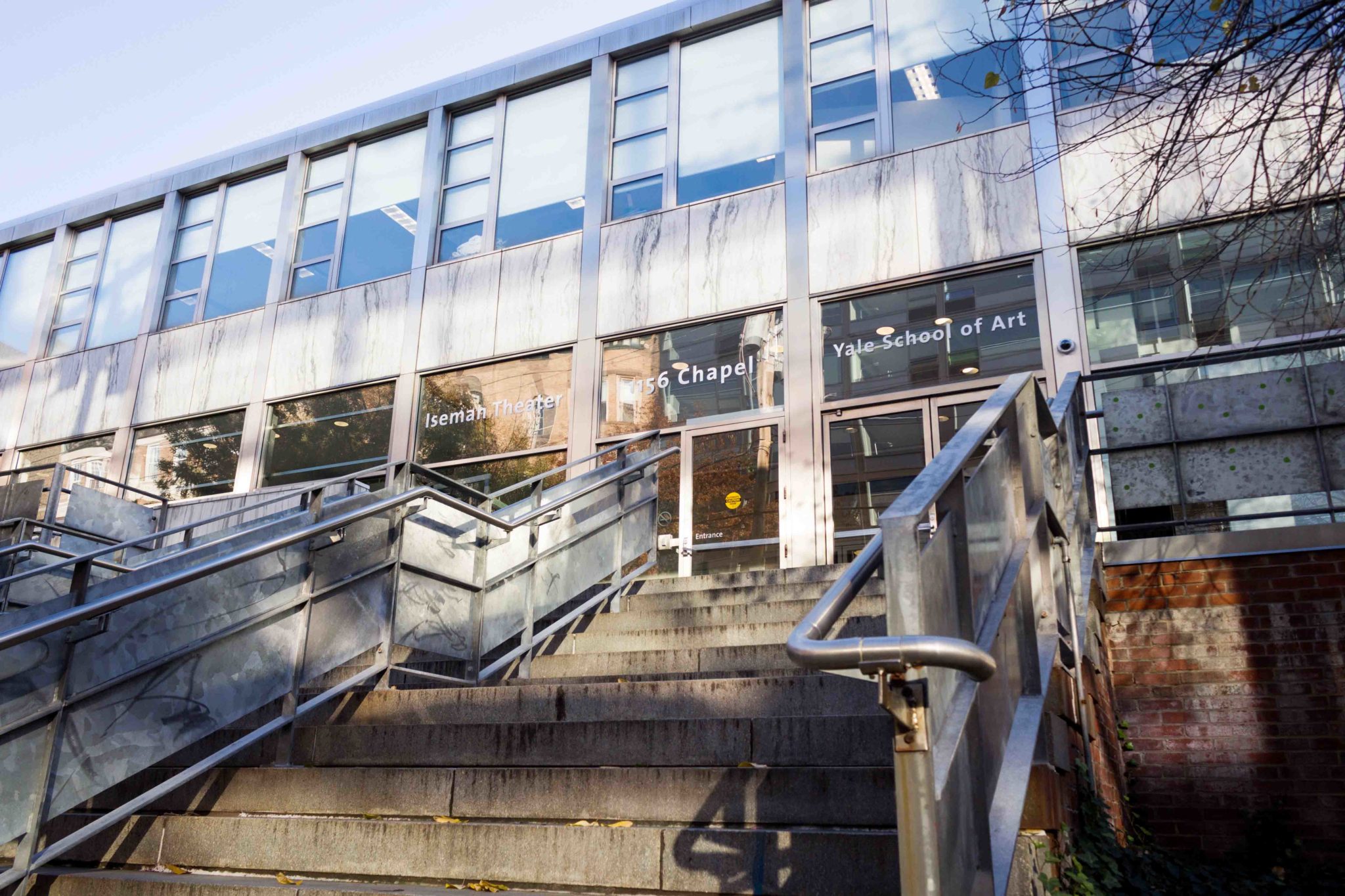
Daniel Zhao, Senior Photographer
An indefinite closure of art studios, labs and museums means that art professors and students have to rethink how they teach, create and share their work.
Even as most of Yale’s classes transition to remote instruction, the art department must contend with challenges unique to its discipline. This includes difficulties with providing live feedback in critiques as well as a lack of access to art materials and studio spaces. To plan for the semester, the Yale Faculty of Arts and Sciences formed a Studio, Performing Arts and Collections-based Courses (SPAC) Task Force to provide guidance for professors.
Alex Taranto ’23 said that in-person art classes are a “unique” experience at Yale. “The current situation is not the best for any major, but especially for art,” Taranto said.
The SPAC report encourages professors to redesign course syllabi and examine the “conditions of life” created by the pandemic. The report’s objectives span explorations of media and technology, the “materiality” of images and intersections between art and public health.
Christian Curiel ART ’05, who teaches Basic Drawing, typically teaches skills that use techniques of observation. This year, although he has not changed his syllabus drastically, Curiel wants to “adapt with the class” in real-time.
“My syllabus is very flexible, because art is a very flexible thing,” Curiel said.
Anoka Faruqee ’94, professor of Color Practice, introduced Adobe Illustrator to supplement a course that in previous years had been solely collage-based. Taranto — who is enrolled in the class remotely — said the adjustment allows her to practice working with Illustrator, a “vital” skill in an artist’s toolbelt.
But altering syllabi cannot overcome all limitations of online instruction. The nature of feedback — an integral component of most art classes at Yale — has evolved as professors and students navigate the digital barrier.
Anasthasia Shilov ’23, an Illustrations editor for the News, noted that simple computer settings such as screen brightness can alter how colors are perceived, which restricts students from experimenting with color choices. Furthermore, students viewing artwork online can only perceive the art in two dimensions. This precludes students from understanding three-dimensional spatial elements and textures in many works of art, Taranto said.
Taranto added that students seem more hesitant to speak on Zoom. This can be especially “crippling” in critiques, she said, where student feedback is essential. She said that to accommodate for this, Faruqee schedules individual mentoring sessions throughout the week.
Art students must also grapple with the lack of a shared studio space. Shilov, who is enrolled from home, works in her kitchen which creates limitations to her work time. She is contemplating using kitchen walls to optimize her space. Alice Mao ‘24, who is enrolled on campus, works in her dorm room. Mao has also opted against using oils due to its toxic solvents.
Taranto said that since the art major is relatively small, the sense of community nurtured in spaces shared by students is especially important. “I think you lose the connections that you make [in those spaces],” Taranto added.
To combat this sense of isolation, some professors have opted to conduct class outside. Mao said that Painting Time — a course that explores the relationship between painting and time — has met twice at the Yale Farm. Curiel plans to schedule a socially-distant outdoors class for his Basic Drawing section. He will ask off-campus students to venture out within their own neighborhoods and do the same.
In order for students to have equal access to equipment, the SPAC Report encourages that the art materials fee be redirected towards funding kits for students on- and off-campus.
Shilov said that she has yet to receive her kit. So far, she has purchased her own materials. Some professors however, have used the fee to cover guest speakers.
Art classes typically include visits to gallery collections on campus and trips to New York City. Curiel noted that encouraging students to look at other works of art is a vital part of teaching. In place of in-person visits to the Yale University Art Gallery, Halsey Rodman — who teaches a class called Words and Pictures — has been using the YUAG’s high-resolution scans. These scans allow students to view art in a more detailed manner than an in-person visit would, Rodman said.
“Online viewing has become a bigger and bigger part of artwork,” Rodman said, while noting the distinct experiences of online and in-person viewing. “It’s not like music, where people would confuse hearing a recording [and] being there in person.”
But even with these creative solutions, Rodman, Taranto, Curiel, Faruqee, Mao and Shilov agreed that the pandemic has taken a toll on creative energy.
“At the end of the day, that’s perhaps the hardest thing about being in quarantine … feeling like there is no reason to make anything without anyone to see it and engage with it,” Taranto said. “You don’t just want people to see it on Instagram or online. You want people to see it in person.”
The SPAC report was published on June 30, 2020.
Samhitha Josyula | samhitha.josyula@yale.edu







